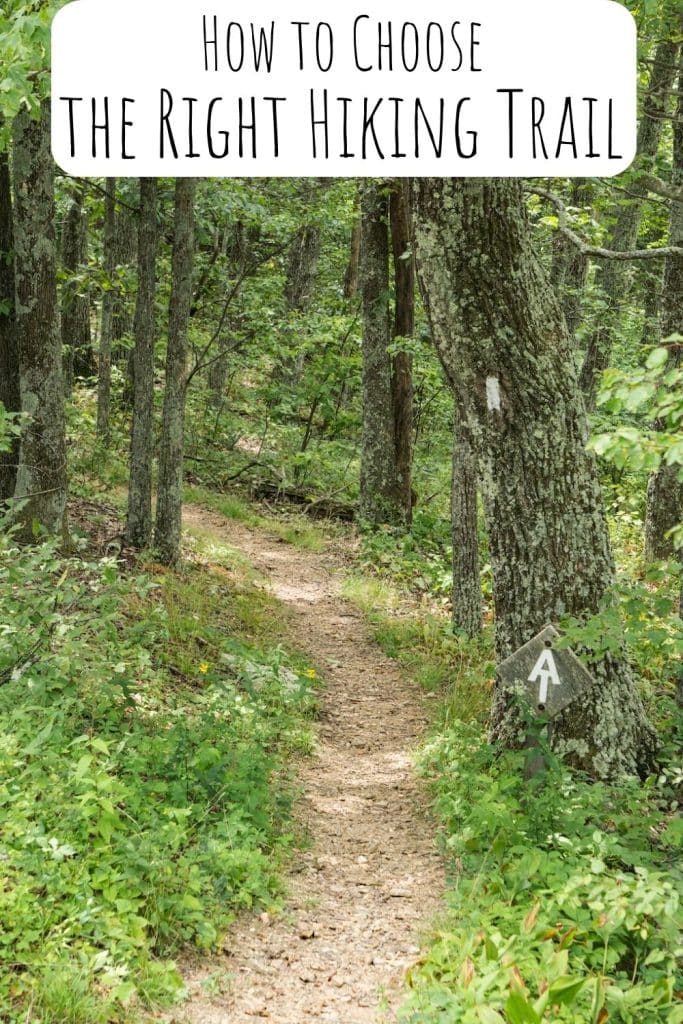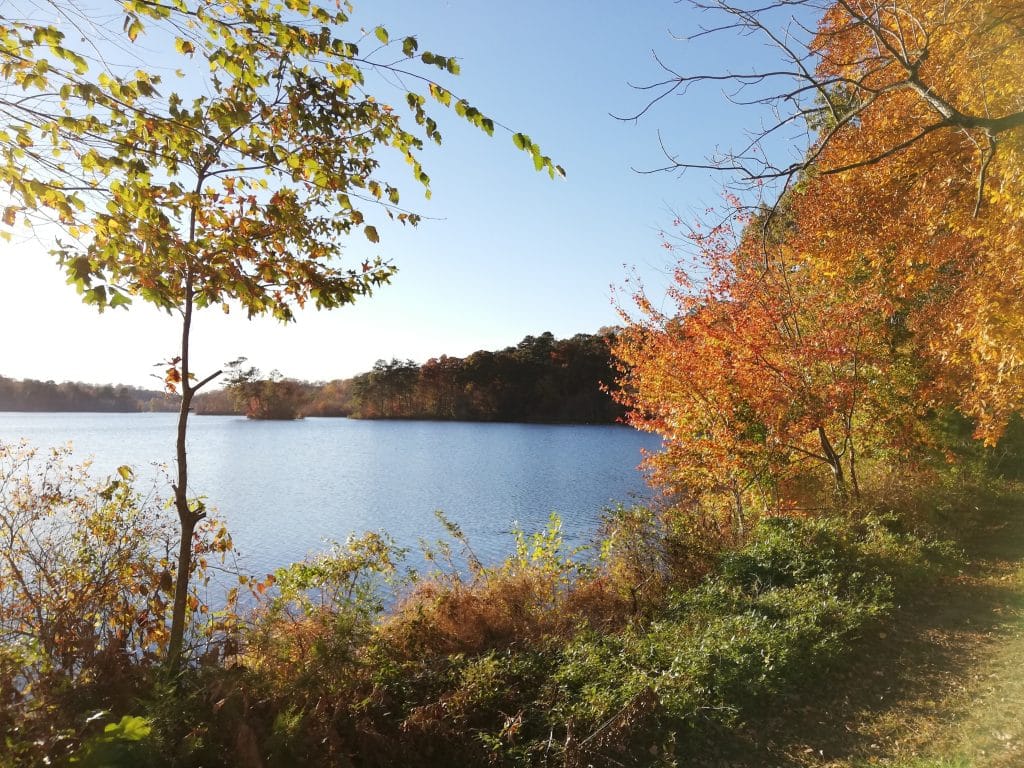How to Choose the Right Hiking Trail
Close your eyes for a moment and envision yourself amidst towering trees, the gentle rustling of leaves, and the invigorating sensation of stepping into the unknown. Hiking is not just a physical activity; it’s a journey that immerses you in the beauty of the natural world. But before you set out on the trail, it’s essential to select the right path that aligns with your preferences, abilities, and aspirations. Drawing upon years of hiking experience, I’m here to guide you through the intricate process of how to choose the right hiking trail, ensuring that every step you take leads to a memorable adventure.

Understanding Your Fitness Level and Goals
Before you begin your hiking odyssey, pause and reflect on your fitness level and objectives. Are you seeking a leisurely stroll that provides a gentle escape, or are you craving the thrill of conquering challenging terrains? Acknowledging your personal limitations and setting clear goals will serve as the foundation for choosing a trail that resonates with your comfort level and the experience you seek.
Considering Trail Difficulty and Terrain
Hiking trails encompass a spectrum of difficulty levels and terrains, much like chapters in a novel. From well-trodden paths suitable for beginners to rugged, rocky tracks designed for experienced trekkers, each trail narrates its own story. It’s crucial to align your chosen trail’s difficulty with your skill set. For novices, starting with easy trails allows you to acclimate gradually, while seasoned hikers might relish the challenge of navigating more demanding paths.

Exploring Trail Length and Duration
Time is a precious commodity, and hiking trails come in various lengths, each offering a distinct narrative. Short trails provide a quick getaway from the bustle of daily life, while longer routes invite you to embark on an extended adventure. As you contemplate the duration of your hike, consider factors such as your pace, the presence of scenic viewpoints, and potential rest stops. Allow the trail’s rhythm to complement your journey, whether it’s a brisk sprint or a leisurely meander.
Researching Trail Conditions and Weather
Nature’s whims can transform a trail’s character in an instant. To navigate these changes effectively, research the latest trail conditions and weather forecasts. Rain can morph a trail into a muddy obstacle course, and unexpected snowfall can shroud familiar markers. Equipping yourself with information empowers you to adapt your gear, strategy, and expectations to the elements, ensuring a safe and enjoyable adventure.

Urban, Rural, or Wilderness?
The choice of scenery can profoundly shape your hiking experience. Do you yearn for the quietude of a forest retreat, the serenity of a lakeside stroll, or the grandeur of panoramic mountain vistas? Urban trails offer a fusion of nature and civilization, while wilderness trails promise a deeper connection to the natural world. Allow your personal inclinations to guide you toward the type of environment that resonates with your soul.
Trail Popularity and Crowds
Hiking can be a solitary pursuit or a shared journey, depending on the trail’s popularity. Well-trodden paths often boast established facilities and a sense of camaraderie among fellow hikers. Alternatively, less-frequented trails grant you solitude and the luxury of communing with nature in tranquil seclusion. As you weigh the pros and cons, consider whether you seek companionship, serenity, or a delicate balance of both.

Evaluating Trail Hazards
Safety should always be a top priority when venturing into the outdoors. Prior to embarking on a trail, assess potential hazards specific to the region. Are there steep ascents that might challenge your fear of heights, river crossings that demand cautious navigation, or encounters with wildlife that require respectful coexistence? Acknowledging these risks empowers you to prepare adequately and engage in your journey with vigilance.
Choosing Between Loop, Out-and-Back, and Point-to-Point Trails
The structure of a hiking trail shapes not only your physical journey but also your mental experience. Loop trails guide you back to your starting point, offering a sense of familiarity and symmetry. Out-and-back trails encourage exploration along the same path, fostering an intimate relationship with the terrain. Point-to-point trails paint a narrative of continuous discovery, urging you forward to uncover new vistas. Consider the storytelling aspect of your hike – whether you prefer returning to your origin, revisiting familiar sights, or venturing into uncharted territory.

Permits and Regulations: Navigating the Legalities
Traversing some trails requires adherence to specific regulations and obtaining permits. These measures are designed to safeguard delicate ecosystems and ensure hikers’ safety. Research the legal requirements associated with your chosen trail and adhere to them diligently. By doing so, you become a steward of the environment, playing a crucial role in its preservation for generations to come.
Pack Smart: Gear and Essentials
A successful hiking expedition is often defined by the gear you carry. Your equipment should cater to your comfort, safety, and convenience. Sturdy and comfortable hiking boots for ankle support are a cornerstone, supplemented by moisture-wicking clothing suited to the weather. Adequate hydration, energy-rich snacks, a comprehensive map or GPS device, a well-stocked first aid kit, and a multi-purpose tool are indispensable. Additionally, consider packing sun protection, insect repellent, and trekking poles to enhance your experience and mitigate potential challenges.

Environmental Awareness and Leave-No-Trace Principles
Hiking is a privilege that comes with the responsibility to minimize your impact on the environment. Embrace the Leave-No-Trace principles, advocating for the preservation of nature’s beauty. Carry out everything you bring in, remain on designated trails, minimize noise, and avoid disturbing wildlife. Cultivate a mindset of reverence for the natural world, ensuring that its splendor endures for future generations to appreciate.
Listening to Recommendations and Personal Experiences
The experiences of fellow hikers are valuable resources that can illuminate the path ahead. Engage with local hikers, delve into online hiking forums, and peruse personal narratives of the trails you’re considering. First-hand accounts provide insights beyond what guidebooks convey, offering a glimpse into the nuances of each trail – the hidden nooks, challenges, and moments of awe that shape the journey.

Trial and Error: Embracing the Journey
Much like a captivating novel, each hiking expedition unfolds its unique plotline. Embrace the concept of trial and error as an integral part of the journey. Every trail has its lessons to impart – conquering a daunting ascent, deciphering the best route through a dense thicket, or learning the importance of pacing. The magic lies in embracing both the triumphs and the setbacks. Remember that growth often arises from moments of challenge and uncertainty.
Conclusion
In the grand tapestry of hiking, the selection of a trail is your first brushstroke, setting the tone for the masterpiece that unfolds. By comprehensively considering your fitness level, ambitions, terrain preferences, and safety concerns, you pave the way for a memorable adventure. Every trail possesses its story – a story of breathtaking landscapes, personal discoveries, and the exhilaration of pushing your boundaries.
As you venture into the world of hiking, let the trail be your guide to self-discovery and a deeper connection with the natural world. Whether you find yourself traversing serene woodlands, ascending majestic peaks, or exploring picturesque valleys, remember that each step is a chapter in your journey. Embrace the beauty of the unexpected, the lessons in every stride, and the unwritten tales that lie ahead.

FAQs
Q: How can I gauge if a trail suits my fitness level?
A: Honestly assess your physical condition and choose a trail that aligns with your capabilities. Opt for easier trails if you’re a beginner and gradually progress as your confidence grows.
Q: Are there resources to check real-time trail conditions?
A: Numerous websites and apps provide up-to-date information on trail conditions, helping you make informed decisions based on the latest updates.
Q: What is the significance of the Leave-No-Trace principles?
A: The Leave-No-Trace principles underscore the importance of responsible hiking, ensuring minimal impact on the environment. Adhering to these principles safeguards natural spaces for future generations.
Q: Is solo hiking recommended for beginners?
A: While it’s advisable to start with company, solo hiking can be suitable for beginners on well-marked, popular trails. Prioritize safety, inform someone of your plans, and be prepared for unexpected scenarios.
Q: How can I discover lesser-known trails?
A: Connect with local hiking communities, explore online platforms and forums, and use dedicated hiking apps to unearth hidden trails that promise unique and serene experiences.







